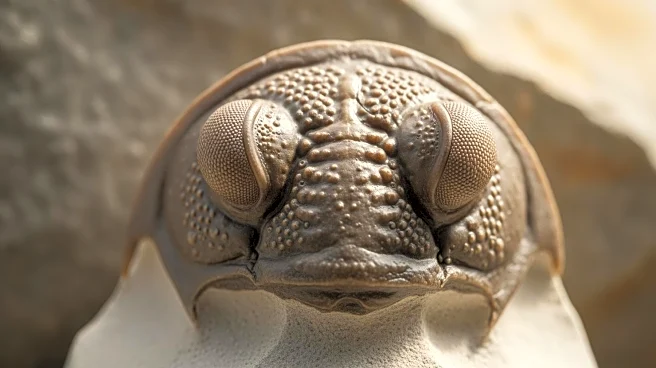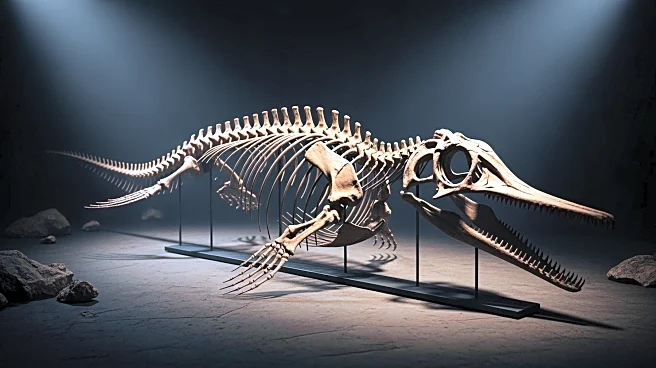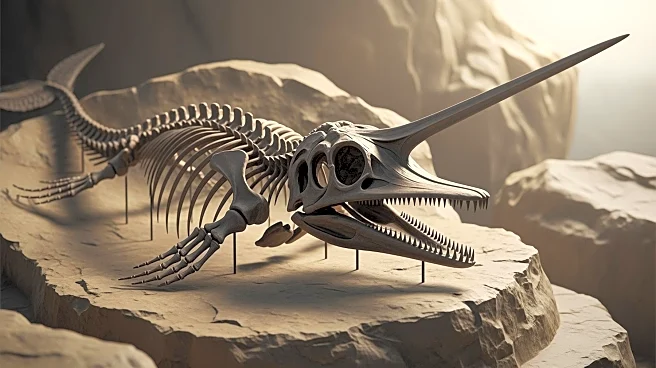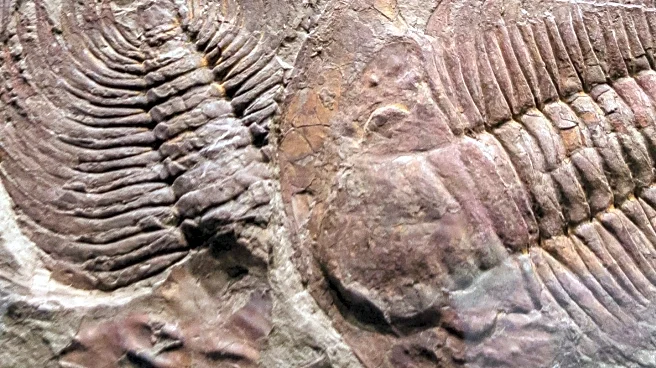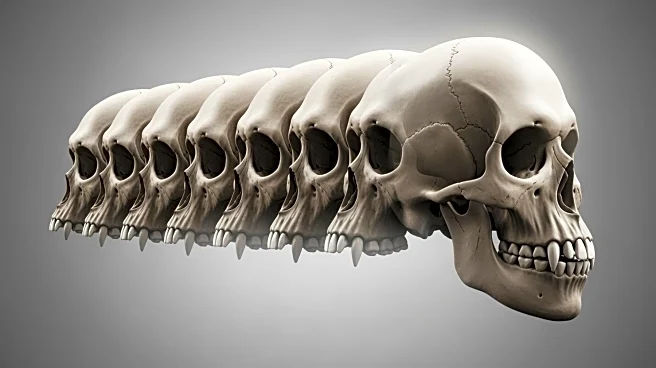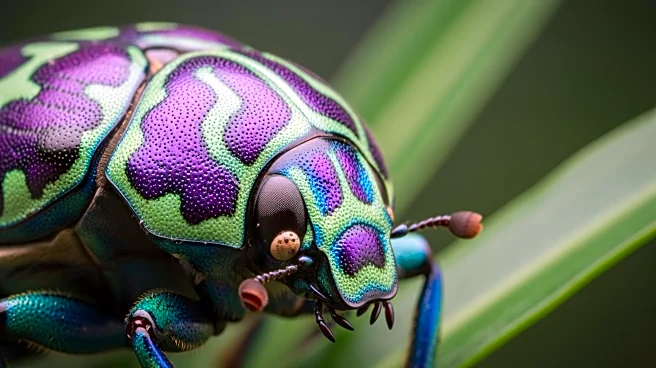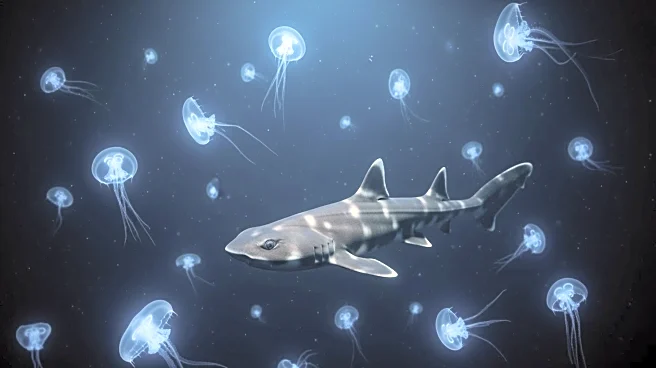What's Happening?
A recent study has uncovered an exceptionally well-preserved trilobite fossil, Aulacopleura koninckii, revealing a compound eye with striking similarities to those of modern insects and crustaceans. This discovery suggests that the principles of compound vision
emerged nearly half a billion years ago during the Cambrian period. The trilobite's eye, described as a 'fully modern' visual system, is comparable to those of living bees, dragonflies, and diurnal crustaceans. The fossil's preservation allowed researchers to identify features of an apposition compound eye, a type found in modern arthropods, which divides the visual field into thousands of tiny segments to create a broad, motion-sensitive mosaic image.
Why It's Important?
The discovery challenges current understanding of the evolution of vision, suggesting that complex visual systems developed within short evolutionary timeframes during the Cambrian period. This rapid emergence of intricate structures raises questions about the creative capacity of random mutation and natural selection. The finding of such modern vision hardware in an ancient organism further challenges the standard evolutionary story for the origin of vision, potentially leading to new research and insights into the evolution of sensory systems.
